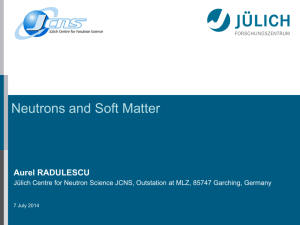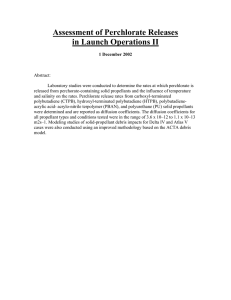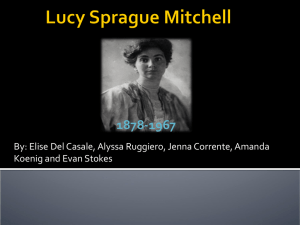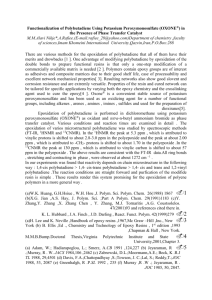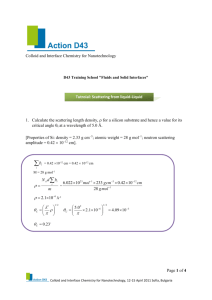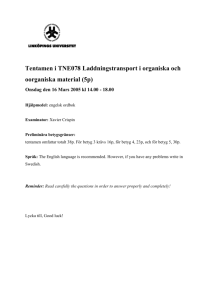Thomas Gkourmpis and Geoffrey R
advertisement
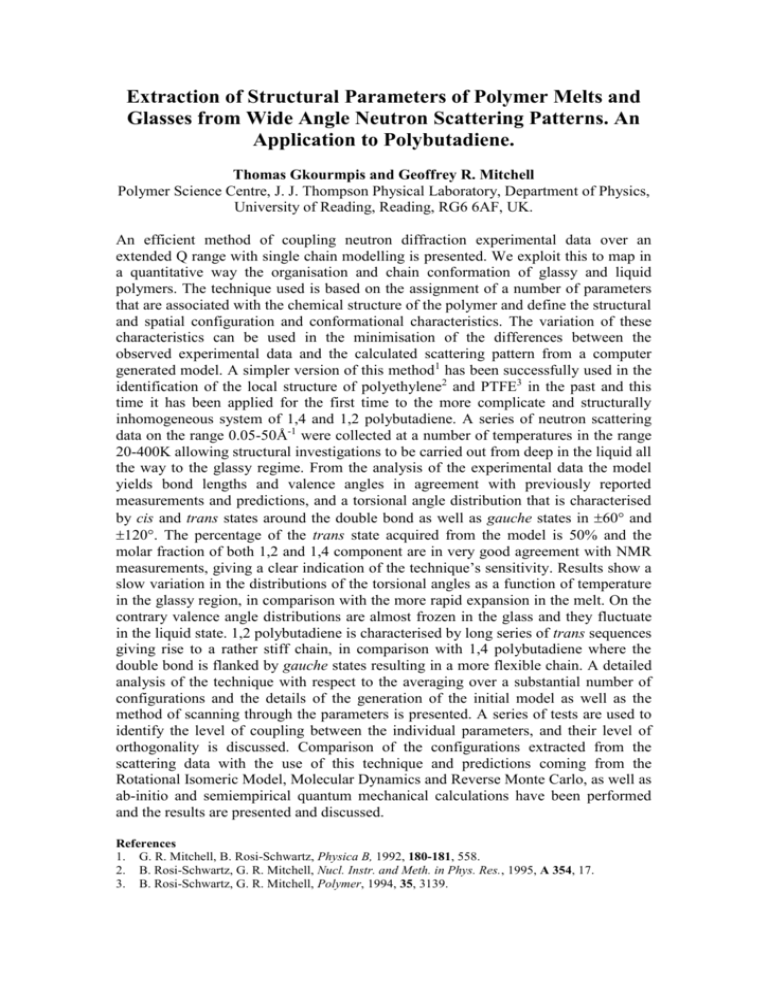
Extraction of Structural Parameters of Polymer Melts and Glasses from Wide Angle Neutron Scattering Patterns. An Application to Polybutadiene. Thomas Gkourmpis and Geoffrey R. Mitchell Polymer Science Centre, J. J. Thompson Physical Laboratory, Department of Physics, University of Reading, Reading, RG6 6AF, UK. An efficient method of coupling neutron diffraction experimental data over an extended Q range with single chain modelling is presented. We exploit this to map in a quantitative way the organisation and chain conformation of glassy and liquid polymers. The technique used is based on the assignment of a number of parameters that are associated with the chemical structure of the polymer and define the structural and spatial configuration and conformational characteristics. The variation of these characteristics can be used in the minimisation of the differences between the observed experimental data and the calculated scattering pattern from a computer generated model. A simpler version of this method1 has been successfully used in the identification of the local structure of polyethylene2 and PTFE3 in the past and this time it has been applied for the first time to the more complicate and structurally inhomogeneous system of 1,4 and 1,2 polybutadiene. A series of neutron scattering data on the range 0.05-50Å-1 were collected at a number of temperatures in the range 20-400K allowing structural investigations to be carried out from deep in the liquid all the way to the glassy regime. From the analysis of the experimental data the model yields bond lengths and valence angles in agreement with previously reported measurements and predictions, and a torsional angle distribution that is characterised by cis and trans states around the double bond as well as gauche states in 60 and 120. The percentage of the trans state acquired from the model is 50% and the molar fraction of both 1,2 and 1,4 component are in very good agreement with NMR measurements, giving a clear indication of the technique’s sensitivity. Results show a slow variation in the distributions of the torsional angles as a function of temperature in the glassy region, in comparison with the more rapid expansion in the melt. On the contrary valence angle distributions are almost frozen in the glass and they fluctuate in the liquid state. 1,2 polybutadiene is characterised by long series of trans sequences giving rise to a rather stiff chain, in comparison with 1,4 polybutadiene where the double bond is flanked by gauche states resulting in a more flexible chain. A detailed analysis of the technique with respect to the averaging over a substantial number of configurations and the details of the generation of the initial model as well as the method of scanning through the parameters is presented. A series of tests are used to identify the level of coupling between the individual parameters, and their level of orthogonality is discussed. Comparison of the configurations extracted from the scattering data with the use of this technique and predictions coming from the Rotational Isomeric Model, Molecular Dynamics and Reverse Monte Carlo, as well as ab-initio and semiempirical quantum mechanical calculations have been performed and the results are presented and discussed. References 1. G. R. Mitchell, B. Rosi-Schwartz, Physica B, 1992, 180-181, 558. 2. B. Rosi-Schwartz, G. R. Mitchell, Nucl. Instr. and Meth. in Phys. Res., 1995, A 354, 17. 3. B. Rosi-Schwartz, G. R. Mitchell, Polymer, 1994, 35, 3139.

